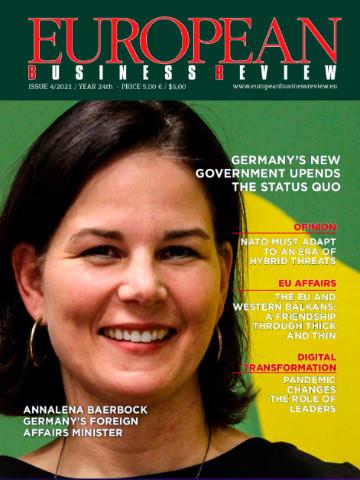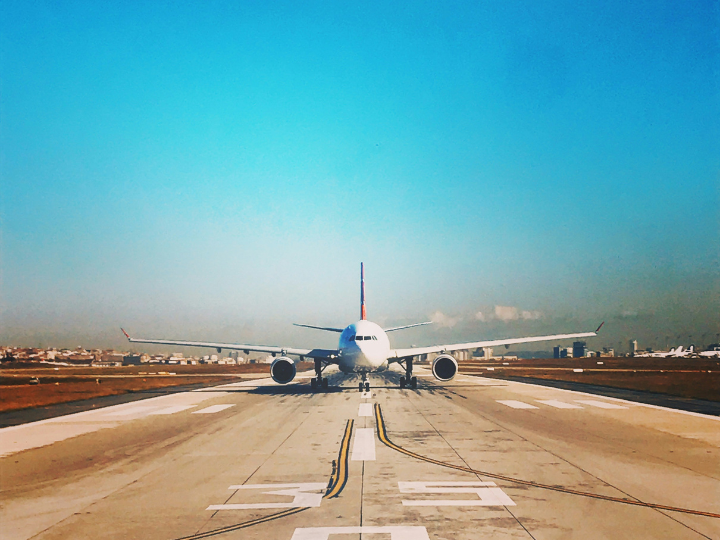by
Margarita Chrysaki*
The purpose of Rosetta and Philae, its lander, was to gain insight into the origin and evolution of the solar system. Following on from this historic day over a year ago, EBR talks with Rosetta project scientist Matt Taylor about his tremendous experience in implementing this project and its outcomes to date.
“The whole mission was a risk. The fact that we were looking to land on body whereby we had no idea what it looked like - it’s not done very often”, Taylor points out at the beginning of our conversation.
But how you can mitigate the risks of such a mission? The Rosetta team always had a huge number of back-up plans: ‘We found the comet in August 2014 and then we started doing these strange pyramid-like orbits to see how the spacecraft would behave depending on the gravity and activity of the body and in September there was around four parallel plans depending on what we would find!’.
At the same time, a risk mitigation process would have been too much work to support this amount of planning. As a result, the team had to make a decision. It decided to focus more on one particular scientific operational plan than the back-up plan. That was the case once they got the lander onto the comet’s surface.
‘You evolve in time and become very dynamic, in particular with this mission because the comet was growing in activity, throwing out 10s – 100s of kgs of dust, ice and gas every second’. Taylor referred to how the dust around the comet blinded their navigation which became the dominant issue and challenge for the team rather than the pressure of the gas and dust coming out. At that moment, the team had to gently approach the problem and again try to solve it.
Undoubtedly, approaching an object whose appearance no one knew about and to attempt to land on it, shows in the most impressive fashion the complexity of Rosetta’s mission: ‘if we hadn’t have had Rosetta, and if someone from the science community came to the ESA submitting the proposal today, I don’t think that in the current system we would accept it because it’s too risky. So it was good that we had colleagues 20 years ago who took the initiative to accept this proposal as it was a great success in many ways’ Taylor says, adding ‘we had the best possible team to do this job’.
Taylor said that his experience on Rosetta was one of the most intense out of anyone working on that project. It was a 24/7 mission or as Taylor calls it ‘a 24/7 e-mail interaction’: ‘Sometimes this interaction was simply iterating about where cells on a spreadsheet were allocated, trying to ensure the high level science was being addressed, making sure that everything was lined up to allow us to get to the next step in the operations’.
The team was working intensively on monthly weekly and even daily schedules at time. From a project science perspective the aim was to try to make everyone happy or equally unhappy. ‘There are hundreds of people who worked on this mission to make it work and I just happened to be lucky to be one of those people that did work on that mission’.
‘There will always be discussions on every future mission about what we learnt with Philae’. So what would happen if deliver a number of small spacecrafts to orbit a comet or a small body like an asteroid? ‘That could eventually lead to a lander being considered.
Any mission looking to get close to a small solar system object will always have Rosetta and Philae to refer to, Taylor underlines, adding that there are some ongoing activities taking place on this within ESTEC. ‘This is what we are working on at the moment while colleagues in other agencies are putting out a call for potential future missions for cometary landers’.
The original Rosetta proposal from 1986 was to land on a comet, take a sample of its nucleus and bring it back to earth for testing. However, the major problem here is that material from the comet has to be captured without changing its molecular make-up, the chemistry or the temperature.
‘That’s one of the challenges for future missions and lessons learnt from Rosetta and Philae will help there- in particular the challenge of locating the lander when things didn’t fully go to plan. You might also need to paint the spacecraft a different colour so it will be easier to observe from orbit, ‘ jokes Taylor, ‘That was a major problem with Philae, as it looked quite similar to the comet’.
‘We got all of the data. But the analysis process will continue over the following decades’. One of the big scientific questions from the beginning of the mission concerned the water on the comet: what was it like? Is it similar to that on Earth or to an asteroid? According to Taylor, the team found that the water on the comet is very different to what we see on Earth. This is important when considering how water got to the Earth in the early stages of the solar systems evolution.
‘We think that the comets may not have been a major contributor to the water on the Earth, delivered through impacts during the so called later heavy bombardment period, when the inner planets were being hit by numerous comets and asteroid. However, the measurements of other molecules on the comet suggest that comets could have delivered a significant amount of material to the Earth’s atmosphere.
In addition, we have found significant amounts of organic material on the comet. These would be ‘the building blocks of DNA, the building blocks of protein: the small glycine molecules, which could have gone on to form more complex molecules, and life itself’, he added.
Getting closer to the comet allows scientists to detect the dust and the gas in greater detail, and the different molecules that would come off from it. Being closer can provide an idea on what the comet is made up of, where it came from, how old it is and the process that created it in the first place. The Rosetta team detected molecular oxygen within the comet, the result of which Taylor stressed was ‘very striking’. ‘You don’t expect to have this molecular oxygen; it’s a very friendly molecule that wants to bond with other molecules.
So, to have it by itself means it’s been captured within the comet in a certain way – it’s been locked in the ice in a certain way. For this to happen you have to restrict how the comet was put together and the temperature that it has always had. This provides constraints on the conditions within the solar system when it was formed’.
At the end of the mission, the scientific team tried to investigate the difference between the two parts of the comet. There has been an ongoing debate about whether the lower part the comet’s body is bigger or smaller in size than its head.
Therefore, the Radio Science Investigation (RSI) of the ESA will measure the change in mass during perihelion so it hopefully shows that there was a change before it came close to the sun (August 2015). They will analyse it afterwards to check how much mass was lost in the comet. ‘We‘ve got all the data and now we will see how the surface changes over time. I’m looking forward to hearing about this because the analysis takes some time’ indicates Taylor.
“In terms of public interest, there’s nothing, I think, that runs close to having all the ingredients that Rosetta has”. The positive feedback from the public and the great interest they’ve shown in the first science results after the Philae landing reminded Taylor that Rosetta’s mission was unique and historic: ‘When you have the chance to give a presentation on the mission you suddenly remember that those spreadsheets, reports and e-mails – the dry part of the job that you have - are a part of some massive machine that’s called Rosetta and then you remember that we are talking about something you can’t even see!’.
The mission ended with very mixed emotions for Taylor, but a high note was when Eberhard Grün, one of the originators of the Rosetta proposal, approached him ‘grinning’. ‘He came up and hugged me and said ‘’Matt, this is so good, this is exactly like when they found the Rosetta stone” and he began to describe it, saying this is the equivalent to where we are now, we now have the years to decipher the science’. Indeed, Rosetta completed its mission and now scientists have to interpret all these data and make decisions on the outcomes.
After being asked if he would like to travel someday to space, his reply was surprising: “I had considered responding to an ESA call a few years back (the one that Tim Peake entered ESA on). You have to get this very high-level medical certificate and you need to pay something like 300-400 euros for it. Well, I thought I can do that or get a play-station. So I got a play-station instead!”
*
Margarita Chrysaki is a Brussels-based Scientific Journalist. She has a BSc and a MA in Political Sciences and was recently admitted for the Master of Space Studies in KU Leuven.




 By: N. Peter Kramer
By: N. Peter Kramer

